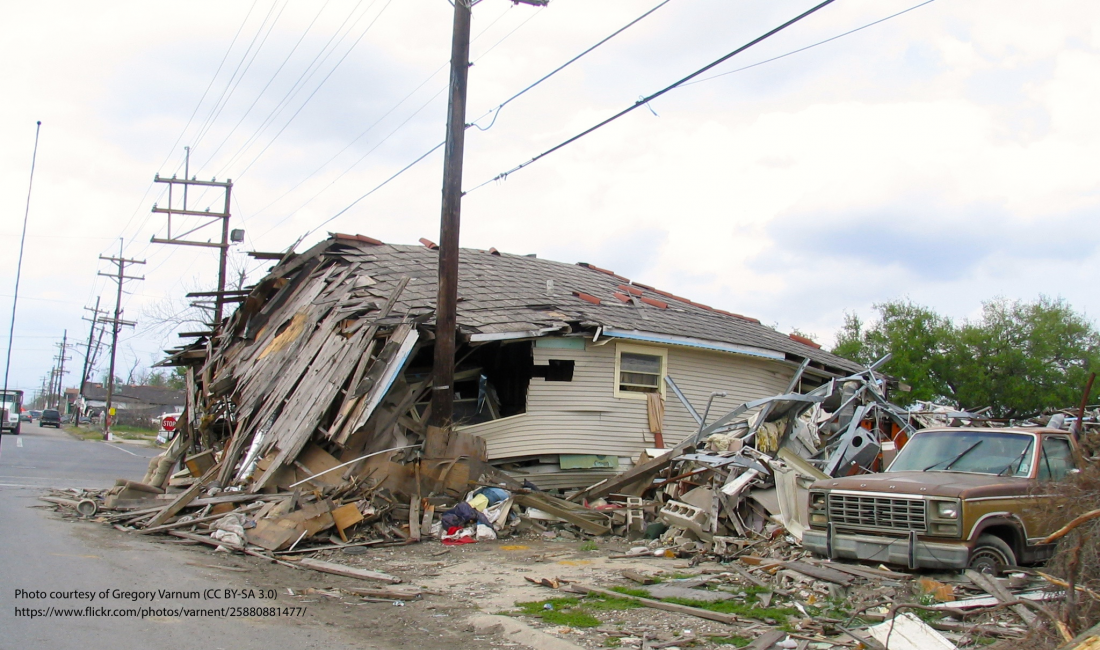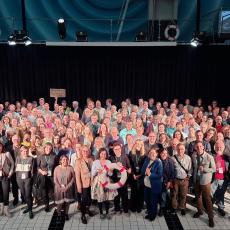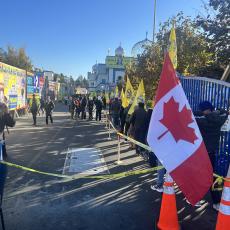A letter from a survivor of Hurricane Katrina to the children of Los Angeles.
This piece was produced and published by Zócalo Public Square, a media non-profit affiliated with Arizona State University.
Days after the 2025 new year, wildfires tore through Los Angeles, reducing over 50,000 acres to ash and leaving families, homes and entire communities devastated. I live almost 2,000 miles from Southern California, but I know that loss. I know the feeling of watching everything you know and love disappear in an instant, with no guarantee of when or how you’ll get it back.
Fifteen years ago, when I was in third grade, my hometown of New Orleans faced a similar heartbreak as Hurricane Katrina devastated the city. I remember evacuating with my parents in the middle of the night, fleeing by car to Jackson, Mississippi. As we drove, live news reports showed our home being consumed by the storm—winds howling more fiercely than I had ever seen, people stranded on rooftops, engulfed by darkness and rising floodwaters. Each day, the destruction only seemed to grow worse. Many never made it out, and those who survived but couldn’t evacuate were left without food, water, or electricity for days, sometimes weeks. The city that raised me—a place once filled with music, laughter and life—was drowning.
In Jackson, we lived in a shelter, sleeping on the floor or on thin mattresses. Each morning, I took a long bus ride to school, exhausted from the weight of uncertainty and overwhelming change. I’d sleep through class, unable to focus on anything. Still, when the time came for us to leave, my teacher and classmates spent an entire day making posters and cards, telling me they enjoyed having me and how much they would miss me. That simple act of kindness made me feel so loved. I still remember the girl who sat next to me, gently nudging me whenever I laid my head down on my desk to rest.
There were other moments of light, too. I remember standing in line for breakfast in the shelter, the scent of powdered eggs and syrup filling the air. On weekends, we would set up tables outside to draw, paint, and play, trying to create some sense of normalcy. I remember listening to Ciara’s Goodies album with some of the girls in the shelter, singing along like we didn’t have a care in the world. I never saw those girls again, but at that moment, I really needed to feel like a kid—to laugh, to dance, to just be young. Looking back, I realise that even in the middle of devastation, I wasn’t alone. We were all just trying to hold on to something that felt like home.
After we left the shelter, three months later, the struggle didn’t end. Returning to what was left of home didn’t mean returning to normal. The aftermath of the storm was everywhere—the eerie silence of streets that had once been full of life, houses with their windows shattered and walls collapsed, streetlights leaning at impossible angles, their wires tangled like broken limbs. I remember walking into our apartment and feeling my childhood slip away as I helped my family gut out moulded furniture, ruined clothes and water-stained toys. Each trash bag I filled was a piece of my past—a favourite doll, a beloved book, a drawing I’d made in school. Losing a home is one thing, but losing the small, everyday things that make you feel safe? That’s something else entirely.
I remember attending George Cox Elementary for a short time—we were all displaced and shuffled into the only school that was still open in our parish. Making friends felt impossible when everything around me was unfamiliar. Eventually, my family and I settled into a new apartment, and I returned to Eisenhower Academy. Though I lost friends who never came back to New Orleans, I slowly found comfort in making new ones and beginning again.
Each storm after that, every hurricane that hit, pulled me back to that Katrina experience. As a child, I didn’t wonder why hurricanes happened, but I knew their impact—on my life, on my family, and the communities around me.
Years later, after graduating college, I shared my memories of Katrina with my family, and they were surprised I still remembered. But trauma doesn’t vanish just because you were young. Even then, I felt the same devastation they did. And in time, I realized I had a choice: I could dwell on what I had lost, or I could focus on the resilience of my community—the people who refused to let disaster define them.
I started asking why. Why do hurricanes happen? Why do some neighbourhoods, usually the poorest, suffer the worst damage? Why weren’t we prepared? And most importantly, how can we do better?
Los Angeles, I know what it feels like to watch your homes, neighbourhoods and memories be swallowed by disaster. I know the way grief lingers, how it sneaks up on you even after the water has receded or the fires are out after the news crews have left after the donations have slowed. But I also know something else: I know that survival isn’t just about making it through the storm—it’s about what comes after. It’s in the hands that help clear away the wreckage, the neighbours who open their doors, and the strangers who remind you that you’re not alone.
Rebuilding isn’t just about brick and mortar. It’s about reclaiming joy. It’s about finding the strength to create new memories, even when the old ones feel impossible to replace. It’s about honouring what once was while making space for what’s to come.
To the children of Los Angeles who are scared, who are grieving, who don’t know what tomorrow looks like—I see you. I was you. And I promise the sadness you feel now won’t last forever. One day, you’ll wake up and realize that even though everything changed, you’re still here. And that means something. That means you have a story to tell. That means you have a future waiting for you.



